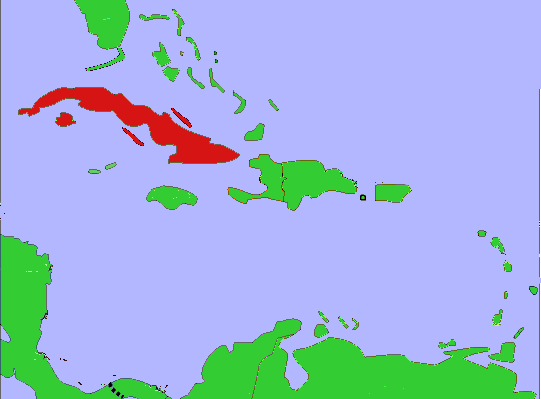
Circle the area on this map

C. Growing sugar cane once made Cuba one of the most prosperous nations in Latin America, but sugar profits have fallen sharply in the face of a six-decade U.S. economic embargo and the loss of other markets.
D. After Cuba’s seizure of property from U.S. landowners and corporations alienated Washington, Cuban leader Fidel Castro turned to the United States’ Cold War foe in Moscow for support. Cuba’s alliance with the Soviet Union brought the world close to a nuclear war in 1962 when the Soviets placed missiles in Cuba.
A. Havana is the capital and largest city in Cuba, with a population of 2.1 million people. Spanish conquistadors founded the city 23 years after Christopher Columbus landed in the Cuba during his first voyage to the Americas in 1492. Within a century of Columbus’ arrival, the estimated 150,000 Native Americans on the island had been virtually wiped out, primarily by European diseases.
B. Like Cuba, Puerto Rico was visited by Columbus and then colonized by Spain. They remained colonies until the Spanish-American War in 1898. In that 10-week war, Spain lost control of Cuba, Puerto Rico, Guam and the Philippine Islands to the United States. Cuba gained independence in 1902 and the Philippines in 1946. Puerto Rico and Guam are U.S. territories.